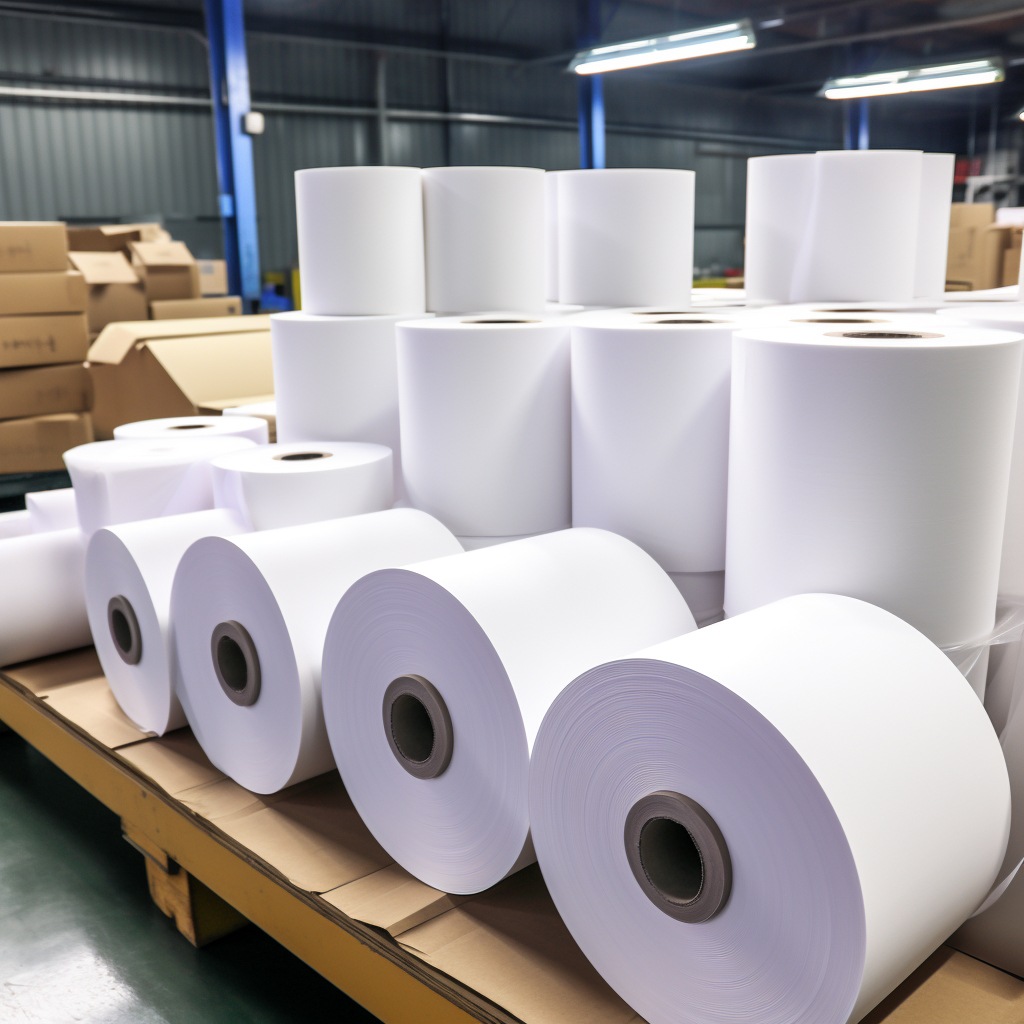
Thermal paper is a special paper commonly used in applications such as printing receipts, invoices and labels. It can generate images or text when heated.
In this paper, we will have an insight into the manufacturing process of thermal paper.
Base paper selection: The manufacture of thermal paper begins by choosing the appropriate base paper.This paper needs to have a certain smoothness and flatness to ensure the clarity and accuracy of the image quality when printing.
Preparation of heat sensitive coating: Next, preparation of heat sensitive coating, which is the core part of heat sensitive paper.Heat sensitive coating is composed of heat sensitive chemicals, generally the heat sensitive compounds are dissolved in the appropriate solvent to form coatings.
Coating process: the base paper through the coating process, the heat-sensitive coating is evenly coated on its surface.This can be achieved by different methods, such as roller coating or spraying.
Dry: The coated paper needs to be dried to remove the solvent and cure the heat-sensitive coating.This is usually done by going through a drying room or oven process.
Drum calibration: In order to ensure the flatness and smoothness of the thermal paper, the paper goes through the steps of drum calibration.This step can further improve the quality and surface properties of the paper.
Cutting and winding: Finally, cut the thermal paper into the desired size and roll it up.
This allows the thermal paper to be easily installed in the printer.
It is worth noting that the manufacturing process of thermal paper may vary, depending on the different manufacturers and product requirements.Some manufacturers may add other additives to the thermosensitive coating to improve printing quality, enhance durability, or provide specific functionality.
To sum up, thermal paper is made by selecting the appropriate base paper, preparing thermal coating, coating and drying steps.This process involves multiple links to ensure that the thermal paper has good printing performance and quality.By understanding the manufacturing process of thermal paper, we can better understand its process and characteristics, so as to better choose and use thermal paper.
The manufacturing process of thermal paper requires strict control of each link to ensure the quality and performance of the final product.The manufacturer usually conducts quality testing and testing to verify that the thermal paper meets the predetermined technical specifications and standards.These tests may include print quality, heat resistance, durability, and scratch resistance. When selecting thermal paper, in addition to the manufacturing process, the following factors should be considered:
Printer compatibility: Different requirements of thermal paper may vary for different types of printers.Make sure to choose a thermal paper compatible with your printer for optimal printing.
Application requirements: according to your specific application needs, choose the appropriate thermal paper.For example, if you need documents saved for a long time, you may need to choose thermal paper with durability and light resistance properties.
Storage conditions: The storage conditions of thermal paper have an important impact on its performance and shelf life.Store the thermal paper at the appropriate temperature and humidity, and avoid exposure to direct sunlight and chemicals.
Finally, it is also important to keep in touch with the thermal paper manufacturers.They can provide more detailed information and guidance to ensure that you choose and use thermal paper correctly.
To sum up, thermal paper is made by the selection of basic paper, the preparation of thermal coating, coating, drying and cutting process.This process involves multiple links to ensure the quality and performance of the thermal paper.When choosing and using thermal paper, understanding its manufacturing process and considering the relevant factors, will help you to get the best printing effect and meet the specific needs of thermal paper products.